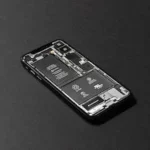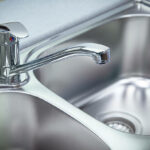The use of AM (ante meridiem) and PM (post meridiem) to indicate time on a clock is derived from the 12-hour clock system, which divides the day into two 12-hour periods. The history of AM and PM can be traced back to ancient times when various civilizations devised methods to measure time.
Early civilizations, such as the Egyptians and the Babylonians, divided the day into 12 hours each for day and night. However, since the duration of hours varied throughout the year due to the changing length of daylight, these hours were not of equal length.
The concept of using AM and PM specifically emerged during the Roman era. The Romans divided the day into two parts: ante meridiem (before midday) and post meridiem (after midday). However, their hours were still not fixed in length and would vary depending on the time of year.
The introduction of mechanical clocks in medieval Europe led to the standardization of the hour lengths. With the invention of the mechanical escapement mechanism in the 14th century, clockmakers were able to create more accurate timekeeping devices. The 12-hour clock system became widespread, and the terms AM and PM continued to be used to indicate the time of day.
AM is used to indicate the time from midnight (12:00 AM) to just before noon (11:59 AM). PM is used to indicate the time from noon (12:00 PM) to just before midnight (11:59 PM). The Latin terms “ante meridiem” and “post meridiem” directly translate to “before midday” and “after midday,” respectively.
It’s worth noting that there is sometimes confusion regarding the designation of 12:00 noon and 12:00 midnight. To avoid ambiguity, some people prefer to use 12:00 noon and 12:00 midnight instead of 12:00 PM and 12:00 AM, respectively.
Here’s a detailed breakdown of how AM and PM work:
AM (Ante Meridiem):
AM starts at midnight, which is 12:00 AM.
The first hour after midnight is 1:00 AM, and this pattern continues until 11:00 AM.
At 12:00 PM, the transition from AM to PM occurs.
PM (Post Meridiem):
PM starts at noon, which is 12:00 PM.
The first hour after noon is 1:00 PM, and this pattern continues until 11:00 PM.
At 12:00 AM (midnight), the transition from PM back to AM occurs, starting a new day.
The use of AM and PM helps avoid ambiguity in specifying whether a particular time refers to the morning or evening. For example, saying “8:00 AM” clearly indicates it is in the morning, while “8:00 PM” indicates it is in the evening.
It’s important to note that some countries and regions may use the 24-hour clock system, which eliminates the need for AM and PM. In the 24-hour system, each hour is represented by a number from 00:00 (midnight) to 23:59 (one minute before midnight). This system is commonly used in military, scientific, and international contexts.
Time Formats: RESPECTIVELY
12-hour / 24-hour
12:00 (midnight)/ 0:00 (beginning of the day)
12:01 a.m. / 0:01
1:00 a.m. / 1:00
2:00 a.m. / 2:00
3:00 a.m. / 3:00
4:00 a.m. / 4:00
5:00 a.m. / 5:00
6:00 a.m. / 6:00
7:00 a.m. / 7:00
8:00 a.m. / 8:00
9:00 a.m. / 9:00
10:00 a.m. / 10:00
11:00 a.m. / 11:00
12:00 (noon) / 12:00
12:01 p.m. / 12:01
1:00 p.m. / 13:00
2:00 p.m. / 14:00
3:00 p.m. / 15:00
4:00 p.m. / 16:00
5:00 p.m. / 17:00
6:00 p.m. / 18:00
7:00 p.m. / 19:00
8:00 p.m. / 20:00
9:00 p.m. / 21:00
10:00 p.m. / 22:00
11:00 p.m. / 23:00
12:00 (midnight) / 24:00 (end of the day)
How to punctuate AM and PM?
Should “AM” and “PM” be capitalized? Is it A.M. and P.M. given that they are acronyms? Should they or can they be lowercase? The “rules” regarding AM and PM formatting aren’t as rigid as you would imagine. Although the Chicago and AP styles advise putting them in lowercase with periods (“a.m.” and “p.m.”) most combinations are acceptable as long as you are consistent.


